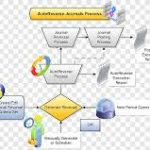JOURNAL REPORT AND FINANCIAL STATEMENT
Go to the first click to report and see what we have for the balance sheet.now the balance sheet is as of a point in time I am going to put the month of February which is 01/02/20 to 28/20/20 and run the report.
we are going to go through these and just check the accounts if you have been working along with the problem.it should time out if it doesn’t that’s ok we will go through other reports and read the detailed reports and try to see exactly where we are off by so the checking account is going to be our first account within the assets section.it is of course a current asset.
Then we have the accounts receivable than the other current assets including inventory prepaid insurance short term investments undeposited funds.
Then we have the fixed assets which would include the furniture and fixture and the related accumulated depreciation. does say depreciation You might be used to the term accumulated depreciation that’s just going to be the way Quickbooks set up the chart of account .
you can adjust that if you choose to do so and then we have the liabilities and equity section starting with current liabilities and starting with the account payable that first the current liabilities then the credit cards payable with the visa card and then other current liabilities. California state board of equalization that going to be our sales tax.
The vender will pay the sales tax to you it might be more appropriate to just have sales tax if you have more than ane vendor than it would probably list out to more than one vendor when really we could group them into a category of sales tax.
We have the interest payable loan payable and out of scope agency it’s a 0 balance here again we are going to have some of these 0 balance that will be generated by Quickbooks which is great because it allows us to drill down on it but when reporting the financial statement to a third party we might want to eliminate those.
And one way we could do that is to export the information into excel and make those types of adjustments. we have got the payroll liability and the earned revenue then we have got the total current liabilities. long term liabilities those do after a year over a year period of times are here and then we have got the equity section we 0 out the opening balance equity we probably want to again remove the 0 balance when we formate the financial statement and then the owners’ investment how much the owners’ investment how much the owner put in versus the retained earnings how much is accumulated over time and owners pay for personal.then we have the net income.
Another section that is a little bit odd in terms of how they break everything out here including. the net income might be something that we don’t want the equity section in a traditional balance sheet. the net income would be just part of retained earning and how we want to break out the owner’s investments might be different too.
we might want to group that together with something like retained earnings or. And the same could be true with the draws we might want to keep the draws in there or group them somewhere else.
If we have a statement of retained earnings that’s typically where we would have these adjustments meaning .that net income, in the beginning, retained earnings and investments and draws so obviously the total assets should be equivalent to the liabilities and equity.and that will be the case because Quickbooks won’t let us do it otherwise
we have to do something very unusual in order for that not to be the case but the total assets and liabilities and equity may not exactly what we have here. what you have. if not then we will check the adjusting journal entries in terms of the journal report and we will check the transaction details to try to drill down and see what the problem is.and save the excel.
Profit and loss account if we are going to the p&l account and look at the cheque total p&l transaction and export the excel.
Third, we are going to journal the report select the date of February, and run the report.
This is one way you can kind of focus in and look at just those adjustments made. typically at the end of the time period in this case the end of the month of February. we see that we have all the transaction types in terms of a check here and we see the activity for the check but we see the activity in terms of debits and credits rather than a form of just a check for by in terms of accounts on individual accounts. So we have the debits and credits, in this case,
Checking account here going down to the low-end account .and go to the process debit and credit accounts, see the transaction so this adjusting journal entry.
